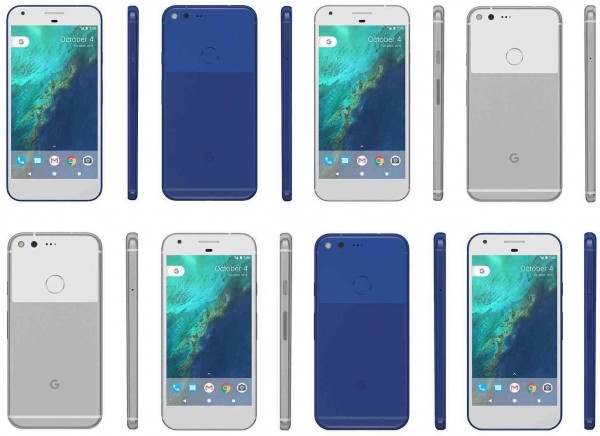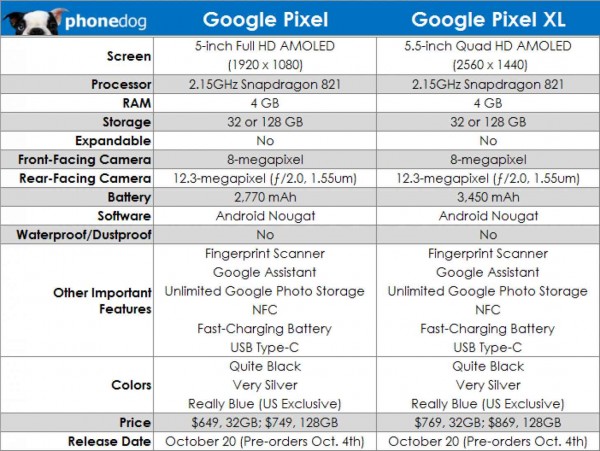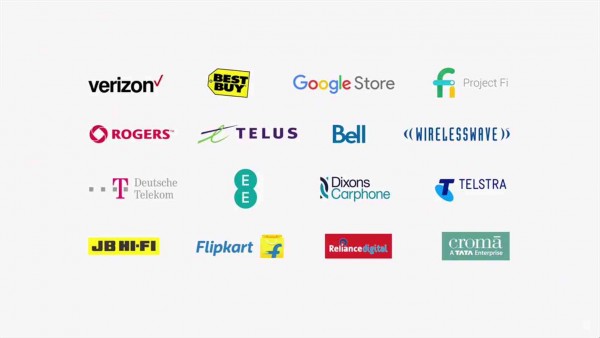Google’s Pixel and Pixel XL flagships official

Looks like the smartphone industry is leaving 2016 with a bang this year. Just as it was rumored, we can now officially confirm that Nexus is no more as Google Pixel, as the line is now called, has arrived with two variants: the Pixel and Pixel XL.
If you’ve been keeping up with the constant stream of leaks over the past few months, then there’s not much to be surprised about here. Various websites have “accidentally” leaked images of the Pixel duo, including Verizon Wireless, so we already had a pretty good guess at what both phones looked like before today.
With rounded rectangular edges, a glass front and aluminum and glass back design, neither Pixel offers much in the way of inspiration – a far cry from last year’s vastly different designs between the Nexus 5X and 6P. On the back is where the fingerprint sensor, camera, and a “G” logo is located. On the underside of the phone is a USB Type-C charging port; on top is where you will find the headphone jack; on the right, you’ll find a power button and a volume rocker. Overall, a very clean-looking device.
Regarding specifications, the Pixel and Pixel XL share many of the same specs, with the main differences being the size of the screen and battery. The Pixel features a 5-inch Full HD AMOLED display, whereas the (aptly named) Pixel XL features a 5.5-inch Quad HD AMOLED display. As for battery size, the Pixel offers a 2,770 mAh battery, while the XL houses a 3,450 mAh battery. Otherwise, the two are identical.
(Apparently some people are experiencing technical difficulties regarding the comparison chart. Shared specs of the Pixel and Pixel XL include: 4GB of RAM, 2.15GHz Quad-core Snapdragon 821 processor, 32 or 128GB of internal storage with no microSD support, 12.3-megapixel rear-facing camera with f/2.0 and 1.55um, 8-megapixel front-facing camera, fingerprint scanner, USB Type-C charging, Google Assistant integration, Fast Charging batteries, and unlimited Google Photos storage with full resolution support. The Pixel duo will come in three colors: Quite Black, Very Silver, and Really Blue (Really Blue being a U.S. exclusive temporarily; reports say that the color will be available in other regions at a later time).
Although Google has rebranded Nexus into Pixel, some aspects stay the same. The Pixel line appears to remain mostly bloatware-free, and will use a new UI called Pixel Launcher. Pixel also has Google Assistant built-in. Neither Pixel appears to support wireless charging, nor do they apparently feature IR blasters.
One of the more surprising aspects of Pixel is the price hike. Nexus, which was known to be somewhat humble in pricing for its specs, appears to be a thing of the past as Pixel is priced with premium in mind. The Pixel starts at $649 for the 32GB option and goes up to $749 for the 128GB model, and the Pixel XL will start at $769 and will increase to $869 for the 128GB variant. There will also be options to purchase the phone on monthly installment plans starting at $27.04/month for the Pixel and $32.04/month for the Pixel XL. Additionally, users may purchase Google device protection for an additional $99.
Pre-orders for Google Pixel and Pixel XL begin today, October 4th, with devices officially hitting shelves on October 20th. Verizon Wireless is stated as the exclusive carrier for this phone when it comes to carrier availability, but Google will continue to offer unlocked versions of the phone duo in the Google Store online, and also through these retailers:
It will be interesting to see how Google’s rebranding and new premium attitude will fare with consumers.
Readers, what are your thoughts on the Pixel now that it’s official? Will you be picking one up for yourself, or did you have higher hopes for the Nexus replacement? Let us know your thoughts in the comments below!













